KubeCon EU 2024: A Model Conference
Posted: March 27th, 2024 | Author: sabre1041 | Filed under: Technology | Tags: cncf, community, kubecon, oci | No Comments »The cloud native world recently descended upon the city of lights in Paris for the 2024 edition of KubeCon + CloudNativeCon EU. As for what has become the norm, the main conference was filled with three days of keynotes, breakouts, and the ever popular Partner Pavilion consisting of a dizzying array of vendors and CNCF projects sharing their offerings. All of this was preceded by a series of co-located events that brought together individuals and organizations focusing on some of cloud native’s most popular projects and initiatives. Looking back at a wild and action packed week, I wanted to share my thoughts, opinions and experiences reflecting upon the week and what it means looking forward toward the future.
An Entire Conference Before the Conference
While many attendees focus on attending just the primary KubeCon + CloudNativeCon event, the conference in all reality kicks off the day prior with the day-0 events. Each KubeCon + CloudNativeCon features co-located events comprising some of the current most popular projects and technologies, like BackstageCon, Cloud Native AI day, and Platform Engineering day, along with familiar staples like ArgoCon and OpenShift Commons Gathering. ArgoCon and OpenShift Commons Gathering were the two co-located events that I participated in, and while the activities at ArgoCon will be described in detail later on, OpenShift Commons Gathering certainly did not disappoint.
OpenShift Commons Gathering this time around took place at the Gaumont Aquaboulevard, a movie theater that was approximately a 15 minute walk from the main venue. The format was somewhat unique to past gatherings as for most of the day, there were two concurrent tracks: the main stage and a series of focused breakout sessions.
Each of the breakout sessions lasted approximately one hour and enabled attendees to immerse themselves in a particular topic area and to collaborate with other members of the OpenShift community.
I, along with my good friend Piotr Godowski from IBM held an interactive breakout session focused on all things security. Not only did we touch upon many of the best practices that are involved for securing containers and the OpenShift platform, but we made the session as engaging as possible as attendees were able to provide their input and feedback within a real time survey platform based upon how they are currently addressing common security concerns and how their efforts are prioritized compared to other IT initiatives. The theater style seating also helped encourage and foster conversations between participants which helped maximize the value that the session could provide. The survey responses will be used to establish future topics for OpenShift Commons initiatives including follow up sessions at future OpenShift Common Gathering events.
For more information on OpenShift Commons including learning more about how to get involved with the community, check out the OpenShift Commons website.
OCI Artifacts Take Center Stage
OCI (Open Container Initiative) artifacts enables the packaging and storage of additional content types aside from container images within traditional OCI registries. OCI artifacts are not new as they have been used for several years now (see the support for storing Helm Charts within OCI artifacts), but recent announcements have helped bring it to the forefront. Just prior to KubeCon, OCI specification v1.1.0 was released that solidified how OCI artifacts are defined and managed. There is a good blog post that was published by the Microsoft Azure Container Registry team that highlights many of the changes and enhancements that are part of the OCI v1.1.0 specification.
Discussions surrounding OCI artifacts were part of both the co-located events as well as the main KubeCon + CloudNativeCon event as I was fortunate enough to speak to the benefits, the features that it enables and how the community can participate.
OCI Artifacts to the Masses
AI and ML is undoubtedly the hottest topic in the tech industry these days. As the community and organizations come to grasp the ways that AI and ML technologies can be utilized, one such area of focus is the ability to manage and utilize ML based models in a scalable way. While S3 is one such option for serving these types of models, OCI artifact represents an alternate solution that not only provides the storage and management capabilities, but also enables the reuse of many of the other technologies that have been developed to support traditional containers including security and provenance.
Attendees of KubeCon + CloudNativeCon got a first glimpse into the world of OCI artifacts and their possible use as they were mentioned several times during the keynotes as well as within dedicated breakout sessions (see below).
GitOps Management using OCI Artifacts in Argo CD
One of the efforts that I have been spearheading for some time now is the ability to manage GitOps assets more natively in Argo CD. At the Argo Con co-located event, Christian Hernandez, Dan Garfield and Hilliary Lipsig and I held a panel that discussed a new proposal in the Argo CD community surrounding bringing first class support for handling GitOps content (content traditionally stored in Git repositories and standard Helm Chart Repositories).
The discussion offered insights into the challenges that OCI artifacts can help solve, how they can be used and ways to help join the community to bring these new sets of capabilities to fruition. The assets including the presentation and recording can be found below:
If you are interested in contributing or participating in the efforts surrounding Argo CD and OCI artifacts, feel free to join the #argo-cd-oci-integration channel on CNCF Slack. I personally, am excited to be able to work with members of the Argo CD community to bring these new opportunities to reality.
A Working Group dedicated to OCI Artifacts
The TAG App Delivery within the CNCF includes projects and initiatives related to delivering cloud-native applications, including building, packaging, deploying, managing, and operating them. As OCI artifacts represent a way to address many of the concerns that the TAG is tasked with, there is a working group within TAG App Delivery that is specifically focused on OCI artifacts. There are three key functions for the working group:
- Gather End User Feedback
- Advocate for Innovative Projects
- Develop Common Patterns
To provide greater visibility and to provide an overview of the Artifacts WG within TAG App Delivery, I participated in a series of lightning talks that was held at the TAG App Delivery project booth that highlighted many of the associated efforts that the TAG is working on.
The presentation consisted of an overview of the challenges found with managing artifacts in a cloud native world, an overview of OCI artifacts, and some of the key areas that the working group is currently focusing on. Of course, any presentation at a conference included a demonstration that provided attendees an overview of some of the initial efforts to address one of the key concerns when managing artifacts effectively: searching for artifacts. The demonstration illustrated a recent feature that was added to the Zot container registry, a CNCF sandbox project, to enable artifact searching.
If there is an interest in participating in the Artifacts WG of TAG App Delivery, head over to the working group website on how to get involved including joining the #wg-artifacts Slack channel along with the bi-weekly community meeting. The presentation from the lightning talk can be found here.
Organizations taking note
While most organizations are just getting their hands on the concepts of AI/ML including OCI artifacts, others have identified the benefits that OCI artifacts can provide in this space and have started developing solutions to take advantage of the opportunities. Bloomberg shared how their internal Data Science Platform (DSP) is exploring the use of OCI Artifacts to manage their ML assets. They are still early in their journey, but it is exciting to see that organizations are recognizing the challenges and the potential ways that they will be able to take advantage of OCI Artifacts to achieve their business goals. I had the opportunity to meet with the presenters and will be seeing how they would be able to share their perspectives including experiences and roadmap back to the TAG App Delivery Artifacts WG group.
Managing OCI Artifacts
Looking across the cloud native landscape, from capabilities that are already in place, such as Helm, and those that are just at the incubation stage, there must be methods to support the management of assets as OCI Artifacts. ORAS (OCI Registry As Storage), a CNCF sandbox project, has become the de facto tool for managing OCI Artifacts and it is already in use by projects utilizing OCI Artifacts along with those that are just at the exploratory phase. Helm and Argo CD already use Helm within their projects and it will be the basis for the expanded use of OCI Artifacts by Argo CD. The Bloomberg team is also making use of ORAS as the reference library as part of their initial implementation.
I have been a maintainer of the ORAS project for some time now and it is refreshing to see so many Open Source projects starting to investigate and utilize ORAS. With each of these implementations making use of ORAS, they will be able to both provide concrete use cases as well as potential features that can be used to increase the capabilities of ORAS.
If you are interested in participating in the ORAS community, join the #oras CNCF channel or check out the ORAS website for more information.
The Helm Community Remains Strong
One of the primary reasons that I attended KubeCon was to be a representative of the Helm project leadership as a project maintainer at the conference. Events, like KubeCon + CloudNativeCon EU, is one of the ways to raise awareness into the current state and initiatives of Open Source projects with the community as a whole. The Helm project offered three ways for attendees to interact with the project:
- Maintainers Track breakout session
- Contributor Session
- Helm project booth in the Project Pavillion
There continues to be a good amount of interest in the Helm project and it was evident in the number of attendees who packed the breakout sessions and stopped by the booth in the Project Pavilion. Probably the most refreshing aspect was the number of attendees that both passed through the project booth and in the hallway tracks who voiced their support for the project including their willingness to offer their time and energy to contribute. This becomes increasingly important as the Helm project works toward the next major version: Helm 4. It is the community that will help guide the project into the next phase so that the appropriate features and capabilities are documented and tasked out appropriately. In fact, the entire contributor breakout session was dedicated to Helm 4 to provide attendees the opportunity to have a first glimpse into some of the areas the maintainers are envisioning as the key priorities to focus on.
If you are interested in learning more about the Helm project including how to contribute, visit the Helm website and/or join the #helm-users channel on Kubernetes Slack.
Conveying the Value of Open Source
Open Source projects are only as strong as the maintainers and contributors who take an active role. However, in today’s economic market, it has become increasingly difficult for many individuals to continue their participation in Open Source projects. This can be attributed to a variety of factors, but one such area that has seen a substantial dropoff from the past is individuals who are gainfully employed being able to have dedicated time for Open Source contribution.
While this may come as a surprise to many, it does make sense. Profits are at a premium these days and many organizations are focusing the efforts of their employees on areas that are within the bounds of the organization. The dropoff of eligible contributors has impacted many Open Source projects, causing them to either remain stagnant or become abandoned altogether. This disparity was highlighted in two ways at KubeCon.
First, Bob Killen, Program Manager at Google spoke directly on this topic in his presentation Why is this so HARD! Conveying the Business Value of Open Source. He illustrated the fact that there is often a disparity between time that employees dedicate on Open Source initiatives and leadership understanding what it can provide for the organization. Often, it is a lack of data. Without the facts; specifically the direct relationship and benefits for organizations, Leadership is unable to justify the time being spent and as a result, the pool of eligible contributors is reduced. I have seen it firsthand as a maintainer of several Open Source projects. There just isn’t as many contributors as there once were. However, if projects establish appropriate tooling, such as providing metrics that interested contributors could take back to their organization, they would be able to appropriately justify the time they are spending on these projects and the true value that it provides.
This specific challenge, where organizations relying on Open Source software should provide opportunities for their employees to dedicate time to associated Open Source projects was highlighted during the Flux and the Wider Ecosystem Planning Birds of a Feature (BoF) session. The future of Flux, a GitOps management tool and CNCF graduated project, was called into question as WeaveWorks, the commercial organization supporting the Open Source project, had recently ceased operations. Since a large number of contributors and maintainers of the Flux project were WeaveWorks employees, there was no clear understanding of what the future would hold once WeaveWorks ceased operations.
Alexis Richardson, former WeaveWorks CEO, and Stefan Prodan, maintainer of the Flux project, led the Birds of a Feather session in front of a packed KubeCon audience to address many of these concerns. As an individual who works in the Kubernetes GitOps space on a daily basis, it was great to see the overwhelming response from the community on what could have been a dire outcome. Thanks to corporate support from organizations, such as GitLab, the Flux project will indeed continue on into the future. However, Richardson was adamant that organizations who do utilize the project must dedicate time for their employees to contribute. And, without this level of support, more and more Open Source projects will unfortunately fall by the wayside.
KubeCon is All About the People
We all live in a distributed world where everyone in the community is spread across the entire globe. Events, like KubeCon + CloudNativeCon EU, offer the opportunity to bring together as many people from the community into a single location. While technology has certainly helped close the gap in terms of making distributed teams as productive as possible, nothing beats the face-to-face collaboration and “hallway type” conversations that a conference, like KubeCon, can enable. I cannot begin to count the number of individuals that I met up throughout the course of the week that I have either met up in various forums, like Slack, or associated with project level discussions.
In addition, to be honest, KubeCon has become literally a Red Hat reunion. Red Hatters, current and former, are everywhere; in almost every community. With that being said, I spent a good amount of time catching up with Red Hatters to hear about what projects that they are working on and their thoughts — past, present and future.
The Red Hat booth became a location where many of these conversations occurred. Once again, the Red Hat booth was a popular destination for all attendees where they had the opportunity to learn about Red Hat solutions and to interact with Red Hat experts. Each day, scores of attendees lined up for the chance to take home a coveted Fedora of their own. Throughout the conference, and even on the streets of Paris, the iconic red Fedoras were everywhere, illustrating the connection of the Red Hat brand with the market.
The Best KubeCon Yet
Looking back at the week that was in Paris, I can confidently say that it was the best KubeCon + CloudNativeCon EU that I have personally attended. Granted, we have come a long way since the first KubeCon + CloudNativeCon EU that I attended back in North America in 2021, the first post-pandemic.
Everything, from the location (who doesn’t love Paris in spring), to the venue (well appointed and right smack in the city of Paris along with being well connected by the citys’ robust transit system), made for an overwhelmingly enjoyable event. The vibe was infectious. 13,000+ attendees embracing Cloud Native and Open Source and having a blast at the same time. Of course, not everything was perfect. Several of the popular sessions were overcrowded with potential attendees overflowing out into the hallways. However, for the majority of the session, the room sizes were suited for the expected and actual attendance.
Looking forward, the CNCF announced the locations for the North American and European KubeCon + CloudNativeCon events for 2025 and 2026:
- Europe 2025 – London – April 1-4, 2025
- North America 2025 – Atlanta – November 10-13
- Europe 2026 – Amsterdam – March 23-26
- North America 2026 – Los Angeles – October 26-29
Salt Lake City, the location for KubeCon + CloudNativeCon NA in November 2024 has its work cut out to match the success of the KubeCon + CloudNativeCon EU Paris event. Fortunately, there are a continuous set of Kubernetes Community Days (KCD’s) running throughout the world, to satisfy the demand in the meantime.
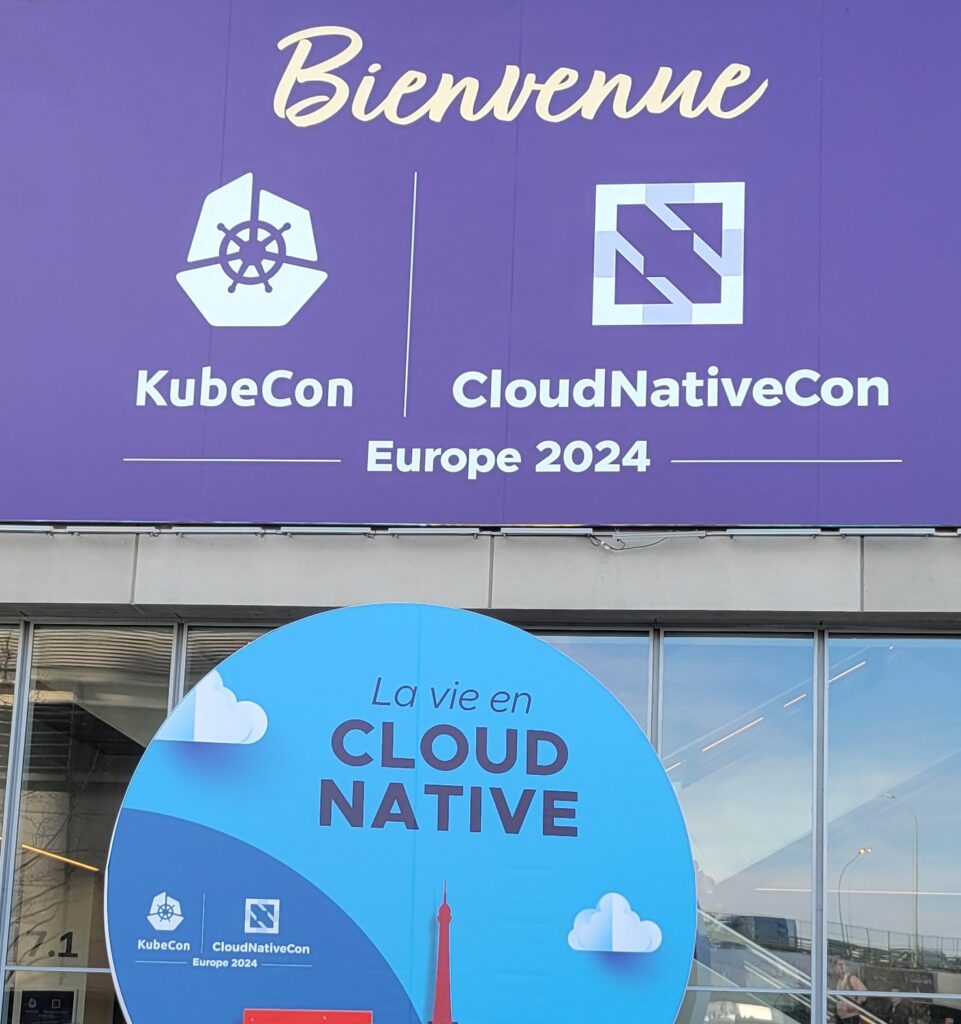
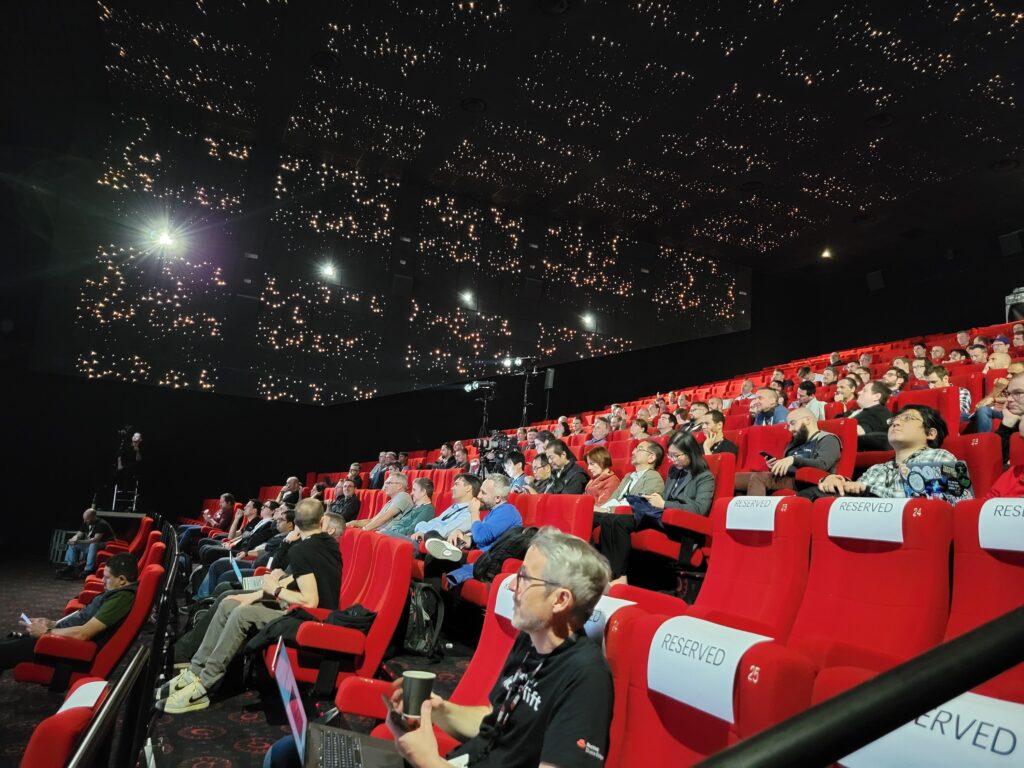
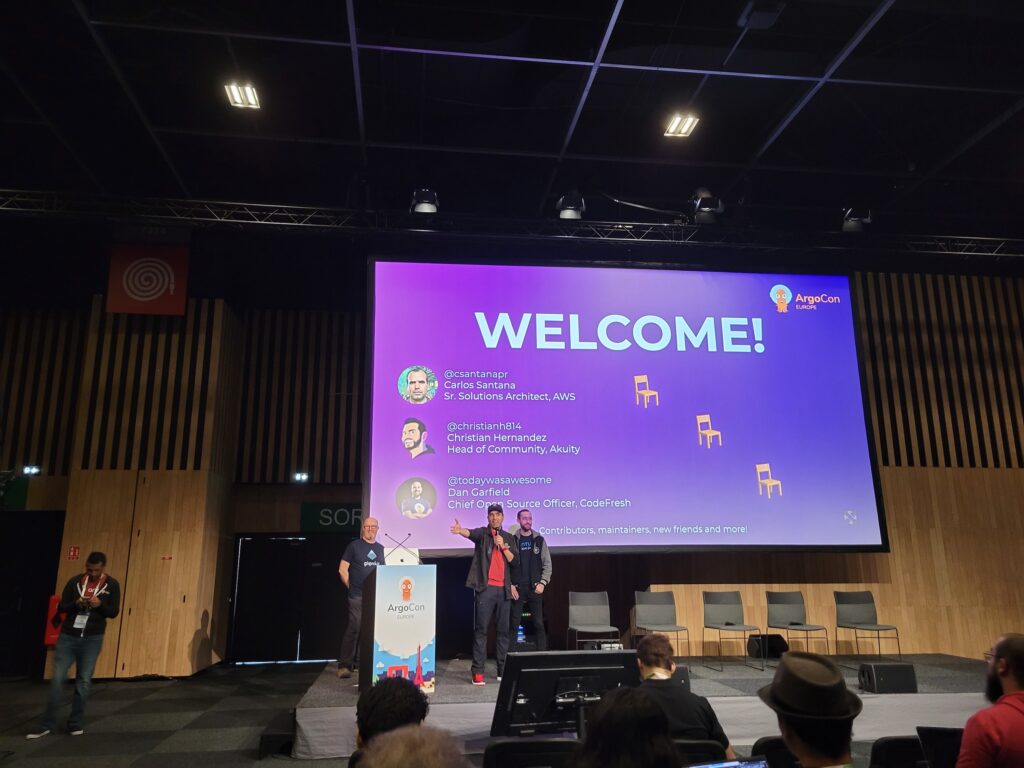

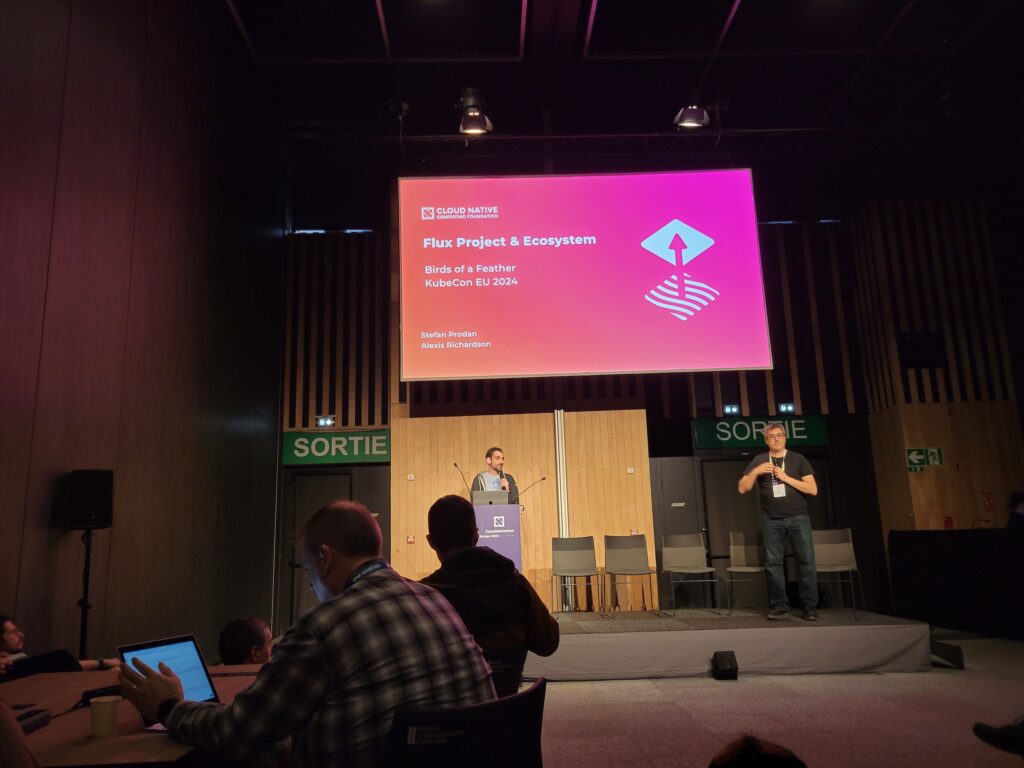
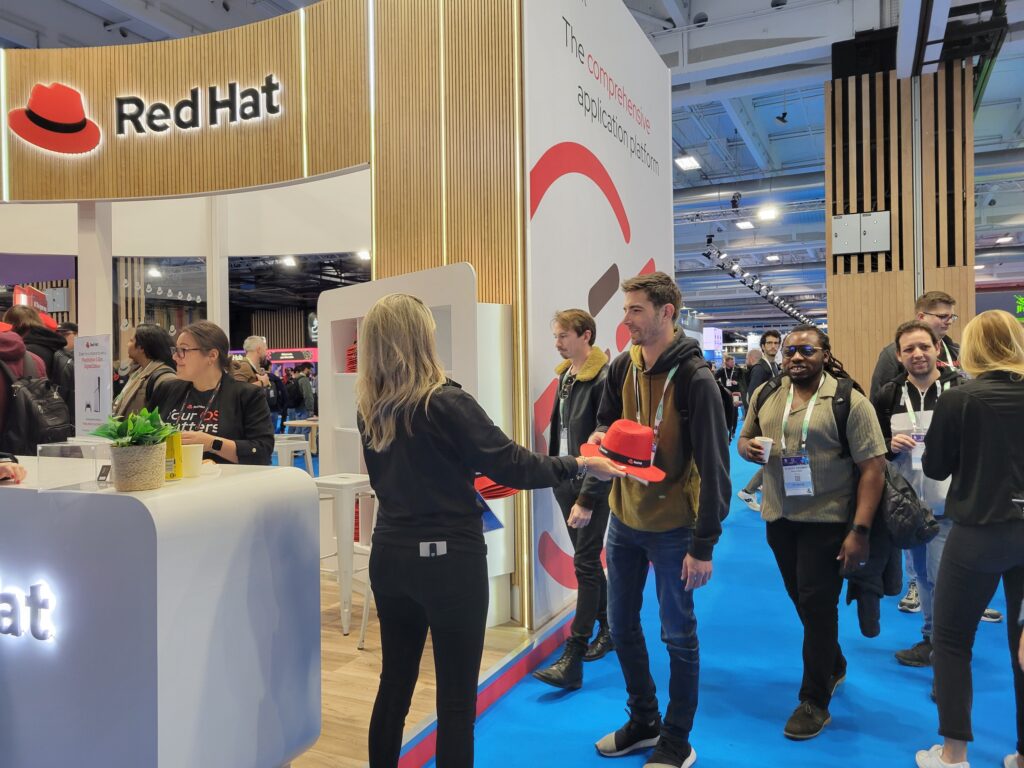

Recent Comments